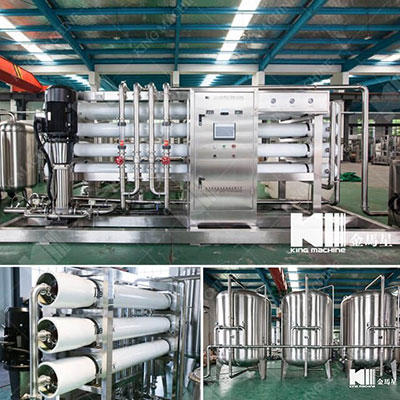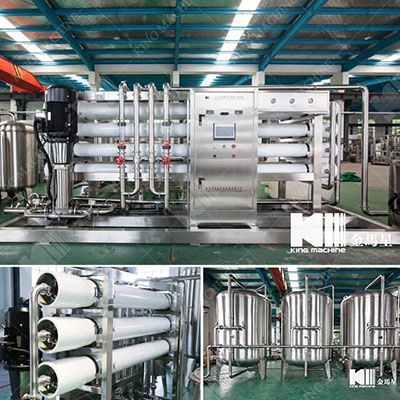News
Site Editor
 Site
/uploads/image/6454bbd2e50a2.png
In most water treatment plant, a reverse osmosis (RO) system is an inevitable component that completes the entire process and plant.
Site
/uploads/image/6454bbd2e50a2.png
In most water treatment plant, a reverse osmosis (RO) system is an inevitable component that completes the entire process and plant.
The Role Of Reverse Osmosis In Water Treatment Plants
Views: 2209
Author: Site Editor
Publish Time: 2020-10-24
Origin: Site
In most water treatment plant, a reverse osmosis (RO) system is an inevitable component that completes the entire process and plant.
Basically, the major responsibility of the RO system is to ensure the removal of contaminated from feed water or unfiltered water. This is done when there is pressure that is forcing the contaminated water across a semi-permeable membrane.
As this goes on, water moves from the side with a high concentration of contaminants to the side with a lower concentration of contaminants within the RO membrane.
The resultant of this movement of water gives rise to a clean and potable water that is fit for drinking.
Generally, this clean and potable water produced by the RO system is usually referred to the permeate.
On the flip side, the water with contaminants, which is left behind is commonly referred to as brine or waste.
Well, for the best experience in water treatment, always buy reverse osmosis plants from a professional water treatment plants manufacturer. With this, you are sure of investing your hard-earned money in the right products.
How the reverse osmosis system work
In most cases, the RO system is used in the removal of chlorine and sediment from water.
This is usually done using a pre-filter that forces the water to pass through the semi-permeable membrane.
The semi-permeable membrane is responsible for the final removal of the dissolved solids in the water.
Once the pre-filtered water leave the RO membrane, the water goes through the post-filter, which is responsible for polishing the water.
With regards to the number of pre-filters and post-filters present, the RO system has various stages of operation.
Stages of water treatment by the RO systems
In most cases, the RO system of a water treatment plant consist of about 3-5 filtration stages.
And in addition to the RO membrane, the RO system usually have a carbon filter as well as a sediment filter.
These filters can either be referred to post-filter or pre-filter subject to the movement of water through them before or after the RO membrane.

Below are some of the filters found in a typical RO system.
1. Sediment filter
This is responsible for the reduction of particles such as rust, dust, and dirt.
2. Carbon filter:
The carbon filter is saddled with responsibility of reducing chlorine, volatile organic compounds (VOCs), as well as other contaminants that are responsible for a bad odor and taste in water.
3. Semi-permeable membrane:
It is the responsibility of the semi-permeable membrane to remove about 98% of all the total dissolved solids (TDS) in the water.
What and what does the reverse osmosis system remove from water?
Using the RO membrane, the RO system is equipped to remove dissolved solids in water such as fluoride and arsenic.
The sediment and carbon filter present in the RO system are also meant to remove a wide range of contaminants in water.
Specifically, the sediment filter is saddled with the responsibility of removing debris and dirt from water while the carbon filter functions in the removal of bad odor, taste and excess chlorine from the water.
Besides the above, the RO systems in a water treatment plant also function in the removal of the following from water;
1. Herbicides and pesticides
2. Sediments
3. Fluoride
4. Salt
5. Arsenic
6. VOCs
7. Chlorine
Invest in High Quality Water Treatment Plants from Us
We are a reputable brand with an outstanding record of excellence in the manufacture of different water treatment plants.
Kindly click here to reach us for the best products without breaking the bank.








